
Fueling Focus: 10 Creative and Nutritious Healthy Snacks for Kids at School

Giving your kids the proper kind of fuel to get through their school day is crucial in the fast-paced world of early education. The trick? Healthy treats that satisfy their appetites while also giving them the nutrition they need for optimum focus and development. You know as a parent that finding the ideal combination of delicious and nourishing foods isn't always simple, especially when it comes to selections that are suitable for school. But don't worry! We've compiled a list of 10 inventive and wholesome healthy snacks for kids at school in this article.These delectable snacks, which range from crunchy to savory, are made to improve your child's focus and energy levels in addition to being delicious. Prepare to fill their lunchbox with a treasure trove of foods that will keep them energized and successful throughout the school day.
Variety for Young Appetites.
The appropriate snacks can make all the difference when it comes to sating developing appetites and ensuring that your youngster stays interested in their studies. Even the pickiest eaters will find something they like in our carefully curated assortment of nutritious school snacks for kids, which features a variety of tastes and textures.
Stress the value of giving kids wholesome after-school snacks.
It's simple to ignore the power of a well-chosen snack in the frenzy of school days, where pencils fly and minds rush. Healthy snacking is a deliberate action that can have a big impact on a child's concentration, energy, and general performance in the classroom. It's not simply about staving off hunger. Here's a closer look at why giving children healthy snacks at school is essential to their performance.
Imagine your child's stomach beginning to growl in the middle of a math lecture. This will cause them to stop paying attention to the lesson and focus instead on their growing stomach. This hunger-related diversion may result in diminished concentration and impair their capacity to learn. In order to avoid these energy dips, healthy foods serve as little fuel stations by supplying a constant stream of energy. Proteins, fiber, and complex carbohydrates contained in wholesome snacks moderate the flow of energy, ensuring that your child is focused and engaged throughout the entire session.
A child's brain needs the right nutrients to function at its best, much like a car needs high-quality fuel to run effectively. Snacks that are nutrient-dense and high in vitamins, minerals, and antioxidants improve cognitive performance and brain health. For instance, omega-3 fatty acids, which are present in foods like walnuts and flaxseeds, have been associated with enhanced memory and focus, assisting your child in keeping up with their academics.
School is a location where people learn, but it is also a time when people grow and develop significantly. A healthy diet is essential for promoting physical development, bone development, and immune system strength, especially during these formative years. The vital elements like calcium, vitamin D, and iron found in nutritious snacks help maintain strong bones, a strong immune system, and a healthy body.
Children who are introduced to wholesome snacks at a young age will develop lifelong good eating habits. You may encourage kids to develop a palate that craves healthy foods by providing nutrient-dense options available. This habit-forming behavior may affect their dietary preferences when they graduate from high school, resulting in greater health for a lifetime.
Beyond its nutritional importance, food serves as a medium for social connection, comfort, and enjoyment. You're assisting your child in developing a healthy connection with food by providing a range of pleasant and nourishing snacks. They'll relate eating to enjoyment and nourishing, which can improve their emotional health and attitude toward food.
In summary, offering wholesome snacks to children while they are at school shows that you care about their academic progress, physical health, and general well-being. By putting their dietary requirements first, you're enabling them to succeed in school, fostering their development, and developing enduring habits that will benefit them even after they graduate. So, keep in mind that while you fill those lunchboxes with well chosen snacks, you're laying the foundation for your child's trip to a better, healthier future.
Stress the benefits of nourishing snacks for improving focus and concentration.
The capacity to focus is nothing short of a superhero in the hectic environment of school, where learning, social connections, and activities merge. While the curriculum challenges students' minds and the teacher conveys knowledge, a lesser-known ally—nutritious snacks—plays a crucial role in boosting focus and concentration. Let's explore how these quick, powerful bites can drastically improve how well your youngster can focus and retain information.
Like any complicated machine, the brain needs the right nourishment to work at its peak. By offering the vital vitamins, minerals, and macronutrients that sustain cognitive function, nutrient-rich foods serve as brain boosters. For instance, foods high in antioxidants, such as berries and dark leafy greens, assist in preventing oxidative stress on brain cells, while complex carbs, such as whole grains, offer a consistent release of glucose, which is essential for preserving mental acuity.
Have you ever observed that an energy high is typically followed by a crash? The capacity of a child to focus might be significantly disrupted by this rollercoaster. Healthy snacks offer a balanced energy supply that helps control blood sugar levels. Consistent energy levels result from stable blood sugar levels, avoiding the highs and lows that can cause distraction and irritability.
A brain that is well-fed also has good connections. Omega-3 fatty acids, which are present in fatty fish, chia seeds, and walnuts, help maintain the structural integrity of brain cells and promote effective neuronal communication. Faster thinking, greater memory, and better problem-solving abilities are all supported by this improved brain connection, which is essential for maintaining focus in the classroom.
The food we eat has a significant impact on not just our physical health but also our mood and cognitive function. The building blocks for neurotransmitters, the chemical messengers in charge of controlling mood and behavior, are found in nutrient-rich snacks. Tryptophan-rich foods, such as turkey and seeds, for instance, aid in the synthesis of serotonin, a neurotransmitter that encourages feelings of happiness and relaxation.
While we frequently emphasize solid foods, drinking enough water is as important for optimum brain health. Dehydration can cause headaches, weariness, and a decline in cognitive function. Along with their healthy snacks, you should encourage your child to drink water throughout the day to preserve their focus and general wellbeing.
Nutritious snacks serve an equally important role in the vast orchestra of education, where lessons are learned and brains are moulded. You may give your child the skills they need to overcome obstacles, understand new ideas, and fully engage in their studies by feeding their brains with the proper nutrients. Therefore, while you make those thoughtfully chosen snacks, be aware that you are providing your child more than just a yummy treat; you are giving them the tools they need to focus, learn, and achieve in the amazing journey that is education.
Talk about the advantages of balanced snacks for a child's mental and physical health.
Maintaining constant energy levels and keen cognitive performance is crucial during a child's hectic school day. This is where the importance of balanced snacks comes into play, providing a good effect that extends outside of cafeteria walls. Let's look at how these carefully selected bites can boost your child's vitality and intelligence.
It's usual for young minds to lose energy when the clock strikes mid-morning or mid-afternoon. This energy dip may result in a shorter attention span and less active participation in class. Here's where well-balanced snacks come into play, ready to deliver a consistent flow of energy. Whole grains, fruits, and vegetables include complex carbs that slowly release glucose into the bloodstream to provide a steady supply of energy that staves off exhaustion.
However, energy is only one component of the puzzle. Cognitive function, or the capacity to reason, acquire knowledge, and process data, is equally important. Incorporating a range of nutrients into balanced diets helps maintain good brain function. The brain's complex message system, neurotransmitter activity, is supported by nutrients like vitamins, minerals, and healthy fats. Omega-3 fatty acids, which are found in foods like fish and chia seeds, are well-known for their ability to improve memory and focus.
Offering your child a variety of nutrients through balanced snacks not only gives them an energy boost, but also helps their brain function at its peak. The proteins in nuts, seeds, and dairy products help make neurotransmitters, which improve communication between brain cells. Antioxidants protect against oxidative stress, which over time can harm cognitive function and is frequently present in colored fruits and vegetables.
Balanced snacks have an effect on both short-term energy and cognition as well as long-term brain health. Your child's diet should include a range of nutrient-rich meals since they can help with memory retention, problem-solving abilities, and information recall. The dietary foundation formed during the school years can have a long-lasting effect on their cognitive development and academic performance.
It is evident that balanced snacks have a good impact on a child's energy levels and cognitive development. These snacks provide a steady stream of energy and a toolbox of nutrients that support ideal brain function, feeding the body and the mind. By incorporating these nutrient-dense foods into your child's daily routine at school, you're not only meeting their current needs but also laying the groundwork for their long-term academic success.
Describe how the nutrients in these foods help with immunity, growth, and general health.
As parents, we are fully aware that development is a holistic process that includes physical health, immunity, and overall wellbeing in addition to being a purely physical occurrence. The snacks we provide for our kids can be crucial in fostering these complex facets of their growth.
Snacks that are high in nutrients act as building blocks for development. The builders that help build muscles, tissues, and cells are proteins, which are plentiful in foods like yogurt, cheese, and nuts. Because amino acids are the foundation of proteins and are necessary for both development and repair, your child's body will be able to keep up with the rapid changes that occur during their school years.
Another major issue for parents is immunity, the body's defense mechanism against diseases. The warriors that bolster the immune system include nutrients like zinc, selenium, and vitamins A, C, and E. These nutrients, which are frequently found in colored fruits and vegetables, are essential for the development of white blood cells and antibodies that protect the body from illnesses. By include immune-boosting snacks in your child's diet, you're equipping them with the means of avoiding infections and maintaining good health.
Growth and immunity, however, are only a part of the puzzle. The wider picture that includes mental, emotional, and physical health is overall well-being. The protectors of brain health are omega-3 fatty acids, which can be found in foods like fatty fish, flaxseeds, and walnuts. They help the brain and nervous system grow, which has a good impact on mood, memory, and cognitive function.
Fiber, which is frequently present in whole grains, fruits, and vegetables, promotes digestive health and aids in controlling blood sugar levels, which ensures a consistent flow of energy. B vitamins function as coenzymes in numerous body processes, boosting energy production and mental alertness. They are found in meals including whole grains, dairy products, and lean meats.
Nutrient-rich snacks contain a symphony of vitamins, minerals, healthy fats, and antioxidants that support development, strengthen immunity, and promote overall wellbeing. You are establishing the groundwork for a healthy and prosperous life for your child by selecting snacks that have been carefully designed with a variety of these critical nutrients.
The nutrients found in these snacks act as a kind of toolkit, preparing your child for the voyage of growth and development. These snacks are an investment in your child's present and future health since they give them the building blocks for their physical development and give their immune system the skills it needs to fight off infections. As you make those after-school snacks, keep in mind that you're not simply satisfying their hunger but also developing their potential for a tomorrow that is healthier and brighter.
Mention the difficulty in locating snacks that are both tasty and wholesome.
It's not easy navigating the world of kid-friendly munchies. Finding the right mix between what is nourishing and what young taste buds find appetizing is difficult. The challenge of providing foods that not only satisfy a child's nutritional demands but also pass the crucial taste test is one that parents are all too aware with.
Children are infamous for being picky eaters, and their tastes can shift more quickly than you can say "apple slices." The benefits of making healthy decisions might occasionally be overshadowed by the craving for salt, sugar, and rapid gratification. It's not unusual to hear the kitchen filled with a booming chorus of "I want cookies!" or "Can I have chips?"
On the other hand, there is the ongoing realization that offering wholesome snacks is of the utmost importance. Parents are aware that developing healthy eating habits early in life might affect their child's long-term wellbeing and influence how they will feel about food in the future. To encourage a youngster to voluntarily eat a plate of vegetables or a handful of nuts, though, can occasionally seem like a losing battle.
The problem is made considerably more difficult in today's age of convenience, where processed, sugary, and salty snacks are all too readily available. It can be challenging to compete with the vibrant packaging, entertaining characters, and promise of fast gratification, especially when attempting to introduce alternatives that might not have the same level of immediate sensory appeal.
The good news is that it's not an insurmountable obstacle. The search for enticing and nutrient-dense snacks can result in some delightful discoveries with a dash of imagination and a sprinkling of perseverance. It is feasible to make snacks that appeal to curious taste senses while yet packing a healthy punch by fusing flavors, textures, and presentation. Consider cheese and whole-grain crackers presented in a stylish, bento-style setting, or yogurt parfaits topped with vibrant berries.
Finding snacks that strike a balance between what kids want and what they need is a balancing act for parents. It's about accepting diversity and realizing that not every snack needs to be packed with nutrients. It's acceptable to occasionally indulge in sweets as long as they're a part of a balanced diet.
Finding tasty and wholesome snacks can be difficult, which is a journey that mirrors the whole parenting experience. It requires persistence, experimentation, and possibly a little bit of negotiating. Teaching children that eating can be healthful and fun is the goal. The next time your child requests a snack, think of it as an opportunity to introduce them to new tastes and reevaluate what they consider to be appetizing and healthy.
Insist on the significance of taking dietary restrictions, allergies, and taste preferences into account.
The saying "one size fits all" couldn't be more false when it comes to creating the ideal school snack. One cannot exaggerate the significance of taking into account dietary restrictions, allergies, and personal preferences. These elements serve as your compass as you set out on the adventure of offering snacks that are both enjoyable and safe, pointing you in the direction of options that fit your child's particular needs.
As distinct as fingerprints are tastes. A child's favorite fruit could be their worst enemy. Carrot sticks may be enjoyed for their crunch, but grapes' rich sweetness may be preferred by some. To make sure that the snacks you thoughtfully pack actually get into your child's gut, it's important to recognize and respect these unique preferences. After all, a food that meets resistance is unlikely to adequately support their educational journey.
It is impossible to disregard the additional complexity that allergies bring. The safety and wellbeing of your child comes first, regardless of whether they have a nut allergy, lactose intolerance, or any other dietary restrictions. It becomes vital to develop the habit of carefully reading ingredient labels and looking for allergen-free substitutes. Finding a snack that satisfies your child's dietary requirements and tastes is a joy beyond measure.
The issue of following school policies follows. To guarantee the wellbeing and safety of every student, several schools have put in place particular policies. This can be restrictions on sugary snacks to encourage balanced diet or a ban on nuts due to allergies. Respecting the wellbeing of every child by following these rules also helps to foster a welcoming and inclusive school community.
It takes open dialogue to navigate these issues. Making snack decisions that your child will genuinely appreciate can be aided by talking to them about their preferences. Additionally, letting school officials know about any allergies or dietary demands guarantees that your child's requirements are understood and met. This partnership between parents and schools makes for a secure and satisfying snack time.
Creating the ideal school snack essentially involves carefully curating selections that meet your child's taste preferences, nutritional requirements, and school policies. It involves giving your child a sense of empowerment by including them in the decision-making process. It involves fostering an understanding of the significance of meeting a variety of needs and fostering a feeling of community within the school.
Remember that every decision you make as you choose your child's snacks is an opportunity to develop not only their physical needs but also their sense of independence and empathy for others. It's an opportunity to convey more than simply food; it's a vehicle for lessons in empathy, the thrill of savoring delectable moments, and the value of life.
Banana Roll-Ups with Nut Butter.
The Nut Butter Banana Roll-Ups combine the natural sweetness of bananas with the richness of nut butter in a lovely marriage of tastes and textures. This snack is not only delicious but also packed with protein and potassium, making it a nutritious powerhouse.
Creamy deliciousness of nut butter blending with the sweet, creamy goodness of ripe bananas. Whether it's peanut, almond, or another preferred nut butter, it adds a delicious richness that harmonizes beautifully with the subtle sweetness of the bananas. The combination offers a balanced nutritional profile that is ideal for a short energy boost in addition to tantalizing the tongue.
Look inside these roll-ups to uncover a pair of nutrients that your child's body will appreciate: protein and potassium. Protein, a crucial macronutrient that supports muscle growth, repair, and overall body function, is abundant in nut butters. These roll-ups are a filling snack that will keep your youngster powered throughout their hectic school day because protein also helps curb hunger.
Bananas are a good source of potassium, a mineral that is essential for maintaining healthy heart and muscle function as well as a normal fluid balance in the body. This makes the Nut Butter Banana Roll-Ups a great option for supporting overall wellness in addition to being a great choice for snacking.
Step-by-Step Guidelines
These delicious roll-ups are simple to make. How to manufacture them is as follows:
- Unprocessed tortilla.
- Nut butter of your choice, such as almond or peanut.
- Banana.
Instructions
That's all, then! You can now eat your Nut Butter Banana Roll-Ups. They are the ideal on-the-go snack for school or any adventure because you can carry them in a lunchbox or snack container.
The Nut Butter Banana Roll-Ups serve as a tasty reminder that nutrition and convenience can dwell together in a world where convenience frequently at odds with health. Therefore, these roll-ups are here to satisfy your child's appetites while promoting their growth and wellbeing, whether you're looking for a delightful snack or a small vitamin boost.
Hummus with vegetable sticks.
Few alternatives compare to the color and goodness of Veggie Sticks with Hummus as a healthy snack. With a rainbow of colors and a variety of necessary nutrients, this snack is a monument to the beauty of nature's color pallet. This snack is a wonderful complement to any school day because it perfectly balances health and flavor, from vitamins and fiber to protein-packed hummus.
Anyone's attention can be captured by the Veggie Sticks with Hummus's striking appearance. The kaleidoscope of hues that the various veggies offer is indicative of their varied nutrient profiles. Carrots' bright orange color is a symptom of their abundance in beta-carotene, which is necessary for strong immune system and vision. Cucumber slices' lush green color adds vitamins and hydration to the meal. Additionally, bell peppers' vivid colors provide a symphony of antioxidants that shield cells from oxidative stress.
This snack doesn't skimp when it comes to nutrition. Vegetables each provide a special combination of vitamins that support your child's immune system, bone health, and skin integrity. For example, carrots include vitamin A, cucumbers contain vitamin K, and bell peppers contain vitamin C.
The hummus, however, is the true star of the show. This creamy dip, which is frequently made from chickpeas, is packed with fiber, protein, and good fats. Fiber maintains intestinal health, facilitates digestion, and keeps one feeling satisfied. The healthy fats contribute to satiety and general wellbeing, while the protein helps to grow and repair tissues. Vegetables and hummus work well together to provide energy for the body and mind.
Advice for Planning and Packing
A little amount of preparation and some ingenuity are needed to make the ideal Veggie Sticks with Hummus snack:
Veggie Sticks with Hummus are a shining example of a healthy diet in a world where convenience foods frequently overshadow the nutritional treasures found in fresh produce. This snack is a celebration of health, flavor, and the pleasures of mindful eating. Its brilliant colors hint at their nutrient wealth, and the protein-rich hummus satisfies. Therefore, as you are ready to drop your kid off at school, think about the enticing appeal of Veggie Sticks with Hummus—a snack that satisfies and enchants with each mouthful.
Mini parfaits of Greek yogurt.
Mini Greek Yogurt Parfaits, which combine layers of creamy yogurt, vivid berries, and crunchy granola, stand out among the selection of school snacks. This snack is more than simply a sensory delight; it also contains probiotics, antioxidant-rich berries, and the deliciousness of yogurt, which is high in calcium. Let's examine the many ways this snack boosts taste and health by delving into the art of parfait-making.
Making a Mini Greek Yogurt Parfait is like arranging a meal in a cup. The idea is straightforward: layers of pleasure that blend together to form a pleasant whole. Greek yogurt's smooth, creamy texture serves as the base, providing a blank slate for the other layers. Then, fresh berries, whether they are blueberries, strawberries, or any other choice, burst with color and antioxidants. These nutrient-dense gems deliver a variety of vitamins and anti-oxidant components that promote general wellness. The granola completes the dish by adding a pleasing crunch and adding whole grains and fiber. With each spoonful, the kaleidoscope of flavors and textures dances together.
This parfait's centerpiece is Greek yogurt, which provides three nutritional advantages. The most important mineral for supporting the growth of sturdy bones and teeth is calcium. It is an essential nutrient, particularly during the formative years of childhood and adolescence when bone formation is at its fastest. Greek yogurt also has probiotics, living healthy bacteria that improve gut health, aid in digestion, and strengthen the immune system.
These substances fight oxidative stress, which can result in cell damage and a number of health problems. Your child's body will benefit greatly from the antioxidant-rich berries you add to your parfait because they will help to preserve their overall health.
Even though the traditional combination of Greek yogurt, fruit, and granola is delicious, there are other options that can be explored to suit varied tastes.
Think about these choices:
Mini Greek Yogurt Parfaits are a wonderful illustration of how flavor and nutrition can dwell in perfect harmony in the world of healthy snacking. Every layer of this delicious dish offers a tale of health and pleasure, from the calcium-rich yogurt to the colorful explosion of berries and the satisfying crunch of granola. So, as you perfect the art of creating parfaits, keep in mind that these little works of art are more than simply treats; they're a celebration of nutrition, creativity, and the satisfaction of enjoying every mouthful.
Sweet and savory trail mix for a customizable snacking adventure.
Sweet & Savory in terms of variety and excitement. This snack has a veritable treasure trove of tastes, textures, and nutrients in a handy, carry-around packaging. You'll find a universe of options as you set out on the voyage of making your very own trail mix creation, each bursting with the healthy richness of nuts, dried fruits, and even a hint of chocolate.
Trail mix is a blank canvas just waiting for your ingredients to paint it. The versatility of this snack—there is no specific recipe, so you are free to experiment with a variety of options—is what makes it so appealing. Dried fruits offer natural sweetness, while nuts serve as a strong foundation. A few seeds, some chocolate, or even a dash of salt can make the mixture taste even better. You can create a mixture that meets your child's taste and dietary requirements by combining almonds, cashews, raisins, or sunflower seeds.
As wide as its component list is, trail mix offers a variety of nutritional advantages. Let's examine the benefits that each element brings:-
- Nuts: Packed with protein, vitamins, minerals, and heart-healthy fats, nuts are a nutritional powerhouse. For example, almonds contain magnesium and vitamin E, both of which are vital for good health. The immune system depends on zinc, which cashews provide in plenty. Nuts are a great option for keeping your child full and attentive throughout the school day since they include healthy fats that provide long-lasting energy and satiety.
- Dried Fruits: Fruits that have been dried add a natural sweetness to the mixture as well as a variety of vitamins, fiber, and antioxidants. Iron is provided by raisins, while vitamin A is present in dried apricots. The presence of fiber promotes healthy digestion and controls blood sugar levels, minimizing energy slumps.
- Chocolate: The addition of chocolate offers a hint of pleasure and provides antioxidants that fight oxidative stress. In particular, dark chocolate includes substances that have been connected to a number of health advantages, including enhanced brain and heart health.
The appeal of trail mix is that it can be customized to each person's preferences. Don't be afraid to experiment and combine different items to make a blend specifically for your child. Think about including a little more dried fruit or chocolate if they have a sweet tooth. Add more nuts and seeds if they are more on the savory side. For even more taste depth, you might think about including a dash of cinnamon or some sea salt.
Sweet & Savory is a tribute to both innovation and good nutrition in the world of school snacks. It's a snack that enables you to take control of your culinary exploration, experiment with flavors and textures, and enjoy the process of figuring out your child's ideal combination. Therefore, when you begin this investigation of snacking, keep in mind that with every handful of trail mix, you're serving more than just food; you're also giving your child a bite-sized experience that's as unique as their likes and preferences.
A Traditional Pair for Satisfying Snacking is Cheese and Whole Wheat Crackers.
Cheese & Whole Wheat Crackers is unquestionably one of those pairings that has endured in the realm of school snacks. A pleasant fusion of tastes and textures that provides both pleasure and nourishment, this classic combo is a monument to the beauty of simplicity. Your child will receive a dose of calcium and energy from the cheese and nutritious grains in this traditional snack, which will help them get through the rest of the school day.
Occasionally, the easiest-to-make snacks are the most satisfying. This attitude is wonderfully embodied by Cheese & Whole Wheat Crackers. It's a snack that doesn't rely on elaborate preparations or spectacular flavors; instead, it emphasizes the smooth blending of high-quality components. Together, the whole wheat crackers' nutritious crunch and the natural creaminess of the cheese create a satisfyingly cozy combo.
calcium and energy from cheese and whole grains. Depending on the variety, cheese is a great source of calcium, which is essential for healthy bones and teeth. It is crucial for fostering overall growth and development, making it especially crucial for kids who are always on the move.
Contrarily, whole wheat crackers deliver a serving of complex carbs, the body's main fuel source. These carbohydrates provide continuous energy that helps keep your child's energy levels up throughout the school day because they are progressively broken down. The combination of whole grain energy and the calcium from cheese results in a snack that is not only tasty but also useful for promoting wellbeing.
The world of cheese is your oyster when it comes to cheese and whole wheat crackers. The kind of cheese you select can significantly alter the flavor profile of the snack, changing it from mild to sharp, from creamy to crumbly. Here are some concepts to think about:
- Cheddar: A traditional option, cheddar cheese provides a flavor balance that complements whole wheat crackers. Choose mild cheddar for a smooth flavor or sharp cheddar for a stronger one.
- Mozzarella: Cheeses like mozzarella are renowned for melting in your tongue. It adds a mild and slightly tart flavor that perfectly pairs with whole wheat crackers.
- Gouda: Gouda gives this snack a bit of refinement with its buttery, silky flavor. It's a fantastic option for individuals who value a more complex flavor.
- Pepper Jack: Pepper jack cheese offers a spicy taste that might perk up whole wheat crackers for individuals who are in the mood for a little heat.
Cheese & Whole Wheat Crackers are a consistent reminder of the delights of simple eating in a world that is continuously changing. The combination of the creamy cheese and the robust crunch of whole grains enables you to taste the essence of each component. As you make this traditional snack for your child's school day, be assured that you are providing them with a simple treat that is packed with flavor and nutrients.
Apple Slices with Nut-Free Butter: A Delicious and Safe Treat
Apple Slices with Nut-Free Butter stand out as a gratifying option that satisfies both needs in a world where safety and nourishment go hand in hand. Due to allergies, many schools now have nut-free policies. This snack provides a safe alternative that is also packed with nourishment. You'll find a convenient and nutrient-dense snack as you delve into the world of seed butter and apples.
Many schools have implemented nut-free policies in order to protect the health and safety of all kids due to the increase in nut allergies. Here's a great substitute that shares the creamy richness of nut butters while being nut-free: seed butter. The texture and flavor of seed butter, which is produced from seeds like sunflower or pumpkin, are comparable and can sate appetites without endangering health.
A wide range of nutritional advantages are provided by seed butter. Seed butter is a source of heart-healthy fats, providing a serving of monounsaturated and polyunsaturated fats, just like its nutty cousins. In addition, seed butter is a good source of vitamins and minerals like magnesium and vitamin E. These nutrients are important for immune system health, muscle health, and general wellbeing.
When apple slices are added, this snack transforms into a well-balanced combination of flavors and nutrients. Apple slices are crisp and refreshing. Apples offer natural sweetness, fiber, and vitamins, making them a well-rounded snack that satisfies hunger and supports good health.
How to Make Apple Slices with NutsIn addition to assembling, Free Butter focuses on maintaining the snack's quality and freshness. Here are some ideas to think about:
- Slicing and dipping: Cut the apples into bite-sized, manageable pieces. Allow your child to dip the apple slices in the seed butter that you are serving on the side. This keeps their snack from browning and also provides them a sense of control.
- Portion Control: Although seed butter is healthy, it has a lot of calories. To promote mindful eating, think about portioning out the seed butter into tiny containers. When it comes to flavor and satisfaction, a little goes a long way.
- Storage: You can softly spray the apples with lemon juice or short submerge them in a water and lemon juice solution to stop the apples from browning. To keep the apple slices crisp, keep the seed butter and apple slices separate until snack time.
Apple Slices with Nut-Free Butter are a prime example of adaptation because they provide a wholesome alternative that complies with school regulations and promotes your child's wellbeing. It's a snack that embodies innovation by offering a substitute that is equally delectable and filling as its nutty cousin. Therefore, keep in mind that by providing your child with this lunch for the school day, you are not only providing them with nutrition but also the serenity that comes from making wise decisions.
Homemade popcorn offers a satisfying crunch to satiate snacking cravings.
Homemade popcorn is irresistible when it comes to school munchies. This traditional snack not only provides a pleasant crunch, but also a blank canvas for imagination. You'll find an addictive and surprisingly healthful snack when you delve into the world of air-popped popcorn. Popcorn can be flavored in a variety of ways, from savory to sweet, and it's easy to prepare ahead of time, making it a fun addition to your child's daily routine.
In terms of snacks, air-popped popcorn stands out as a healthy alternative. Air-popped popcorn has surprisingly fewer calories than the popcorn you get at the movies, which is usually saturated in butter. It is a whole grain, high in fiber, and free of the bad fats frequently found in other snack foods. This means that while your child is enjoying the delightful crunch of popcorn, they are also receiving the nutritional benefits of a healthy dose of dietary fiber that promotes digestion and keeps energy levels stable.
While plain popcorn's inherent simplicity is alluring in and of itself, the beauty of homemade popcorn comes in the imaginative possibilities it offers for taste exploration. Listed below are some ideas for enhancing the flavor of your popcorn:
- Nutritional yeast: Popcorn is enhanced by nutritional yeast, sometimes known as "nooch," which has a savory and somewhat cheesy flavor. It's a popular among people looking for a savory flavor without using too much butter or salt.
- Cinnamon Delight: Cinnamon adds warmth and complexity to popcorn, which is perfect for individuals with a sweet craving. For those who like a little of sweetness without going overboard, this choice is ideal.
Making Popcorn Ahead of Time and Packaging
Homemade popcorn has the advantage of being easy to prepare ahead of time and pack for school. This is how you do it:
In addition to being a snack, homemade popcorn serves as a blank canvas for culinary creativity. It's a snack that gives more than just a wonderful crunch—it offers a fulfilling, nutritious experience that improves your child's school day—with the healthfulness of air-popped goodness, the playfulness of flavor explorations, and the ease of preparation.
Fruit Kebabs with Yogurt Dip: A Whimsical Combination of Taste and Artisanship
Yogurt-Dipped Fruit Kebabs stand out among the variety of school lunches as a creative masterpiece that mixes the sweetness of fresh fruit with the indulgent creaminess of yogurt. In addition to satisfying hunger, this food is also a visual treat and a nutritional powerhouse. You'll find a snack that is equally nourishing for the eyes as it is for the body when you set off on the voyage of making these kebabs.
Yogurt-Dipped Fruit Kebabs have an irresistible charm. Imagine colorful fruit pieces delicately threaded onto skewers and sparkling with a thin yogurt layer. The end product is a comical exhibition that elevates a straightforward snack to the level of a work of art. A feast for the eyes is provided by the contrast between the fruit's vivid hues and the creamy white of the yogurt. And as you take the first bite, the yogurt's acidic sweetness perfectly balances the fruit's inherent sweetness to produce a flavorful symphony.
In addition to satisfying your palate, yogurt-dipped fruit kebabs provide your body with a variety of vitamins and minerals. Calcium, a mineral that is essential for developing and maintaining healthy bones and teeth, is abundant in yogurt. Yogurt also offers protein and probiotics, which boost immune system and digestive health.
A blast of vitamins and antioxidants are provided by the pieces of fresh fruit threaded onto the kebabs. Each variety of fruit offers a special combination of nutrients. For instance, berries are a good source of vitamin C and other anti-oxidant substances. Citrus fruits deliver a dose of immune-boosting vitamin C, while melons supply moisture and vitamins.
Tips for Threading and Freezing
The process of making Yogurt-Dipped Fruit Kebabs requires both imagination and accuracy. This is how you do it:
Fruit Dipped in Yogurt Kebabs are an example of both inventive culinary cooking and healthy eating. This snack engages the senses and nourishes the body from the time you thread the first fruit chunk onto a skewer to the delightful crunch of frozen sweetness. As you make these kebabs for your child's school day, keep in mind that you're giving them more than just a snack; you're creating a memorable experience that will fill them up.
Whole Grain Muffins: A Delicious Package of Nourishment
Whole Grain Muffins stand out as a delicious and adaptable alternative for school snacks that can be tailored to fit any taste. In addition to satisfying appetites, these delicious baked goods offer a platform for including additional nutrients from fruits or vegetables. You'll learn the advantages of utilizing whole grain flour and the inherent sweetness that results from using real ingredients as you explore the world of whole grain muffins.
The options with whole grain muffins are endless. Although the traditional varieties frequently include flavors like blueberry or banana, these muffins are amenable to inventive modifications. Grated veggies, such as zucchini or carrots, can be snuck into the dish to add moisture and nutrition. As an alternative, adding pieces of fresh or dried fruit gives the muffins bursts of added nutrients and natural sweetness.
Whole grain flour, which gives these muffins their unique nutritional profile, serves as their base in Whole Grain Muffins. Whole grain flour, as opposed to refined flour, keeps the fiber-, vitamin-, and mineral-rich bran and germ. This translates to muffins that provide steady energy and aid in a sensation of fullness because they are high in fiber.
The delicate sweetness that comes from the natural sugars in fruits or even unsweetened applesauce is more than simply flavor; it's nourishing. This implies that the enjoyment of the Whole Grain Muffins is not dependent on the addition of a lot of sugar. They rely on the natural sweetness of actual ingredients instead.
Here is a simple recipe for whole grain muffins that you can use as a base and some suggestions for modifying it:
**Ingredients**
- 1 ½ cups whole wheat flour
- 1 tsp baking powder
- ½ tsp baking soda
- ½ tsp salt
- 1 egg
- ½ cup plain Greek yogurt
- ½ cup milk
- ¼ cup melted coconut oil or melted butter
- ⅓ cup honey or maple syrup
- 1 tsp vanilla extract
- Options for customization, including mashed bananas, diced apples, blueberries, and grated carrots.
**Instructions**
Ideas for customization include:
- Carrot-Apple Delight: To make a muffin that is high in fiber and vitamins, mix in grated carrots and diced apples.
- Berry Burst: To add natural sweetness and antioxidants to the batter, mix in a few cups of fresh or frozen berries.
- Banana Bliss: For a moist and naturally sweet version, mash ripe bananas into the batter.
A perfect example of how nutrients and enjoyment can coexist is whole grain muffins. As you master the art of muffin-making, keep in mind that you're constructing more than just a snack for your child's school day; you're also crafting a moment of fun and good sustenance.
Oat Bars for Energy: A Nutrient-Rich Powerhouse for Busy Days.
Energy-Boosting Oat Bars shine as a light of convenience and continued vitality in the hectic world of school schedules. These tasty bars are more than just a treat; they're a transportable source of energy that was especially created to keep busy bodies and minds going all through the school day. You'll learn the trick to creating these nutrient-dense gems and giving your child's day a boost of nourishing power as we examine the beneficial ingredients—oats, dried fruits, nuts, and honey.
One that tucks neatly into your child's backpack and is prepared to deliver a constant stream of sustenance whenever required. Energy-Boosting This same essence of convenience and vigor is captured by oat bars. These bars provide prolonged energy without the spikes and crashes frequently associated with sugary snacks since they are made to give a combination of slowly releasing carbohydrates and quickly acting sugars.
Energy-Boosting Oat Bars combine natural ingredients to create a delectable treat with a balanced nutritional profile.
- Oats: The modest oat is at the center of these bars. Oats, which are packed with complex carbohydrates and fiber, provide a steady release of energy that aids with your child's ability to focus and stay motivated all throughout the school day.
- Fruits that are dried: These bars get both flavor and nutrition from the natural sweetness of dried fruits. The nutritional content of the bars is increased by the addition of vitamins, minerals, and antioxidants from dried fruits like raisins, cranberries, or apricots.
- Seeds: Sunflower, chia, and flaxseed seeds, which are small but mighty, add a lot of nutritious richness to the dish. They increase the satiety factor of the bars and promote general wellbeing because they are loaded with beneficial fats, protein, and vitamins.
- Honey: Honey, nature's golden elixir, serves as a natural adhesive and sweetener. It is the ideal ingredient to these bars because it not only improves the flavor but also gives you a quick energy boost.
Easy Recipe for Oat Bars
Use this straightforward recipe to create your own Energy-Boosting Oat Bars:
**Ingredients**
- 2 cups rolled oats
- 1 cup mixed dried fruits (e.g., raisins, cranberries, apricots), chopped
- ½ cup mixed seeds (e.g., sunflower seeds, chia seeds, flaxseeds)
- ½ cup honey
- ¼ cup nut or seed butter (optional)
- ½ tsp vanilla extract
- Pinch of salt
**Instructions**
**Customization**
Feel free to experiment with different dried fruits, different nut or seed butters, or a dash of cinnamon to personalize the bars.
Energy-Boosting More than simply a snack, oat bars give your child the sustaining energy they need to get through the school day. Remember that when you begin the process of making these bars that you are not only creating nourishment but also creating moments of vibrancy and vigor.
Conclusion: Providing Nutritious Snacks to Nurture Growing Minds
It's simple to ignore the significance of what we put into our bodies in the rush of modern life, especially when it comes to our kids' snacks. But as we've delved into the world of inventive and healthy school snacks, one thing has become clearly clear: providing our children with good options goes beyond simply satiating their hunger; it also involves fostering their development and laying the groundwork for future success.
It's no secret that a child's development is greatly influenced by their diet. Their bodies and minds require the proper nutrition to thrive as they negotiate the opportunities and challenges of the school day. The natural sweetness of fruits, the sustaining strength of whole grains, or the vibrancy of seeds and nuts are all examples of wholesome snacks that provide people the energy they need for both their bodies and their minds. A well fed body is better able to focus, assimilate knowledge, and actively participate in academic endeavors.
Providing healthy snacks doesn't have to be a tiresome process. Actually, it's a chance for collaboration, exploration, and interpersonal connection. As parents, we have the ability to expose our kids to a variety of tastes, textures, and colors in order to pique their curiosity and interest in wholesome foods. Include your kids in the process of choosing ingredients, putting together snacks, and even flavor testing. You're encouraging a healthy relationship with food as well as a sense of responsibility over their well-being by involving them in the process.
As we come to a close with our discussion about healthy after-school snacks for kids, let's keep in mind that every mouthful counts. Every apple slice, nut butter dip, and other delectable dish is more than simply food; it's an investment in the development, well-being, and academic progress of our kids. So let's embrace the art of inventive snacking, bringing fresh flavor discoveries and the satisfaction of knowing that we're feeding not only their bodies but also their sharp minds, to each day.
Action Item: Let's Set Out on a Delicious Snacking Adventure!
Are you feeling motivated by the variety of wholesome and original school snacks we've looked at today? It's time to don your chef's hat, roll up your sleeves, and head to the kitchen to create some delicious snacks for your children. We cordially welcome you to give the snack suggestions we've provided a try and experience the joy of nourishing your child's body and mind with each delectable bite.
Share Your Snacking Adventures: Please tell us about your snacking adventures as you set out on this healthy snacking expedition. Did your child adore the Nut Butter Banana Roll-Ups or maybe the Energy-Boosting Oat Bars were his or her absolute favorites? Perhaps you modified the recipes in your own special way? Whatever the situation, it's important that you share your views and experiences since they may motivate other parents to provide their kids better options.
Join the Discussion
Have queries regarding portion amounts, component swaps, or inventive modifications? Or perhaps you could provide some advice of your own? Feel free to comment on the blog article below. Together, let's build a strong community where we can share knowledge and improve the wellbeing of our kids.


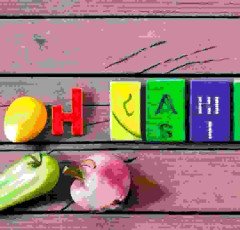


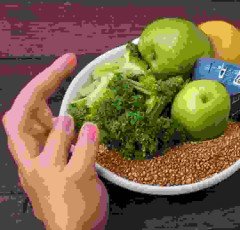



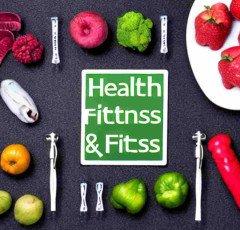





























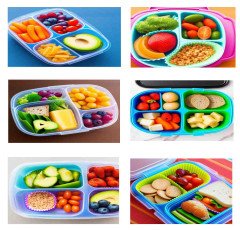






















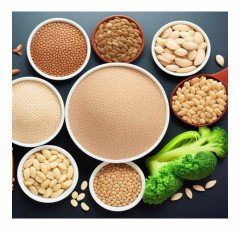














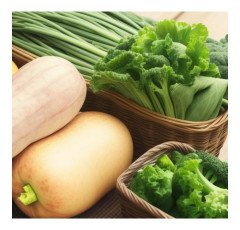
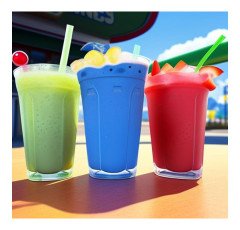








 Adidas Shoes
Adidas Shoes  LCD Writing Tablet
LCD Writing Tablet 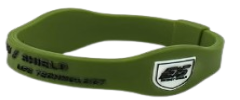 Wristbands
Wristbands  Best Selling Books
Best Selling Books  Graphics & Design
Graphics & Design  Door Handle Collection
Door Handle Collection  Apple iPhone
Apple iPhone  Pet Care Products
Pet Care Products  Best Home Appliances
Best Home Appliances  Creative Brief For Video Shoot
Creative Brief For Video Shoot  Puma (Clothing & Accessories)
Puma (Clothing & Accessories)  Favorite Company (Cuelinks)
Favorite Company (Cuelinks)  Hanging Lights For Living Room
Hanging Lights For Living Room  Crocs
Crocs  Best Phone
Best Phone  1150+Trendy kids coloring pages Bundle
1150+Trendy kids coloring pages Bundle  One World Collection
One World Collection  Essentials for Gamers
Essentials for Gamers  Men Clothing
Men Clothing  Prime Video
Prime Video  Wall Lamp
Wall Lamp  NordVPN
NordVPN  Dell Laptop
Dell Laptop  Women Fashion
Women Fashion  Digital Voice Recorder
Digital Voice Recorder  Online Technology Classes
Online Technology Classes  Healthy Ingredients
Healthy Ingredients  Wireless Gaming Mouse
Wireless Gaming Mouse  Hot Bags For Pain Relief
Hot Bags For Pain Relief  HP Laptop
HP Laptop  ASUS Laptop
ASUS Laptop  NordPass
NordPass  Amazon Best Selling Products
Amazon Best Selling Products  Kitchen Tap
Kitchen Tap  Unlimited access to classes on illustration, photography, design, film, music
Unlimited access to classes on illustration, photography, design, film, music  Hello Theme
Hello Theme  Smart Doorbell
Smart Doorbell  Echo Dot - Smart speaker with Alexa
Echo Dot - Smart speaker with Alexa  Dual USB Car Charger
Dual USB Car Charger  SOFAS
SOFAS  Top Rated From Amazon
Top Rated From Amazon  The Click Engine
The Click Engine  SEO Checklist
SEO Checklist  Wireless Bluetooth Earphones
Wireless Bluetooth Earphones  Kitchen Daily Use
Kitchen Daily Use  Duke T Shirts
Duke T Shirts  ASPINAL LONDON
ASPINAL LONDON  Home Decor Items
Home Decor Items  Samsung Mobile
Samsung Mobile  All Wireless Products
All Wireless Products  NordLocker
NordLocker  Realme Smart Phone
Realme Smart Phone  Stylish Sneakers by Red Tape
Stylish Sneakers by Red Tape  4k Projector For Home
4k Projector For Home  BEST SELLER TOP10
BEST SELLER TOP10 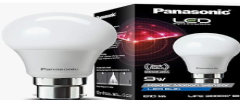 Motion Sensor Light
Motion Sensor Light  Best Sellers On Amazon
Best Sellers On Amazon  Smart Watches
Smart Watches  Online Marketing
Online Marketing  Best Robotic Vacuum Cleaners
Best Robotic Vacuum Cleaners  Artificial Intelligence
Artificial Intelligence  Bathroom Mirrors
Bathroom Mirrors  Air Purifier for Home
Air Purifier for Home  Unreal Engine 5 For Beginners Learn The Basics Of Virtual Production
Unreal Engine 5 For Beginners Learn The Basics Of Virtual Production  ELECTRONIC ACCESSORIES
ELECTRONIC ACCESSORIES  iPhone cable
iPhone cable  Rakhi
Rakhi  RPM 3.0
RPM 3.0  Acer Laptop
Acer Laptop  TitTok Revolution
TitTok Revolution  The Secret Email System
The Secret Email System  Sennheiser
Sennheiser  Only For The United States
Only For The United States 


















